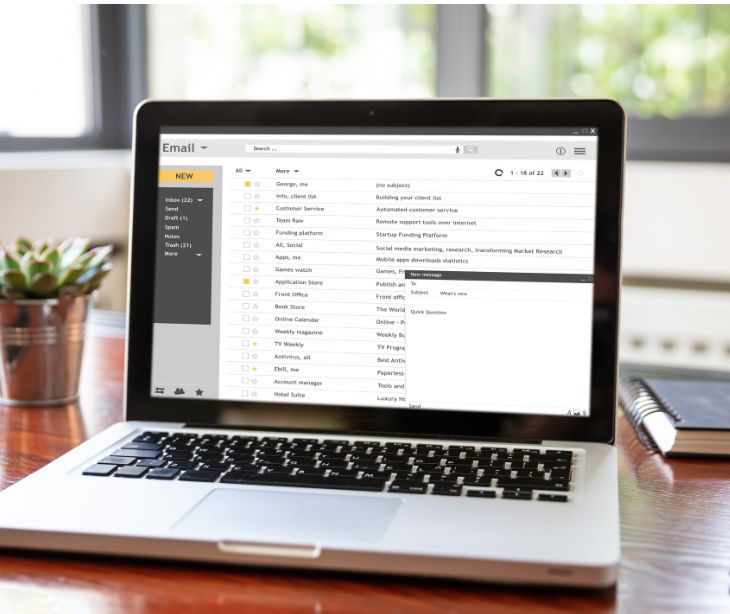
Healthcare institutions routinely exchange highly confidential patient health information (PHI) through email, making them prime targets for cyberattacks and data breaches. Secure Email Gateways (SEGs) act as a filter system, allowing potential email threats to be identified and dealt with effectively.
What is a secure email gateway?
An SEG is a specialized email security system designed to protect an organization's internal email servers and safeguard email communication. Serving as a first line of defense against a wide range of email-based threats, an SEG acts as a gateway through which all incoming and outgoing emails pass. Its primary purpose is to filter and scrutinize these emails to distinguish between unwanted and legitimate content.
It is adept at identifying and blocking various threats, including spam, phishing attacks, malware, and fraudulent messages. Moreover, SEGs offer the ability to analyze outgoing messages to prevent sensitive data from leaving the organization or to automatically encrypt emails containing confidential information.
SEG functionality can be deployed either as a cloud-based service or as an on-premises appliance, catering to the organization's specific security requirements.
See also: Secure email practices to protect patient privacy
Cloud storage vs. on-premises storage
The choice between cloud storage and on-premises storage for an SEG should align with an organization's specific requirements, budget constraints, and data privacy concerns. Some organizations may choose hybrid solutions that combine both cloud and on-premises components to strike a balance between control and scalability.
Cloud storage for SEG
- Scalability: Cloud-based SEG solutions are highly scalable, allowing organizations to adapt to changing email traffic and user needs without significant hardware investments or capacity planning.
- Cost-effective: Cloud solutions often reduce upfront capital expenditures, as organizations pay for the services they use on a subscription basis, potentially lowering the total cost of ownership.
- Maintenance-free: Cloud providers handle hardware maintenance, software updates, and infrastructure management, reducing the burden on IT teams.
- Global accessibility: Cloud-based SEGs can be accessed from anywhere, which is advantageous for remote workforces and organizations with multiple locations.
- Rapid deployment: Cloud SEGs can be quickly deployed and configured, speeding up the implementation process.
However, there are considerations to keep in mind when opting for cloud storage.
Data privacy is paramount, and organizations must ensure that their chosen cloud provider complies with necessary regulations, such as signing a business associate agreement (BAA) to safeguard sensitive email security data. Reliance on internet connectivity is another critical factor, as interruptions in internet service can impact the availability of cloud-based SEGs.
On-premises storage for SEG
- Control: On-premises SEG solutions provide organizations with full control over their email security data and infrastructure, which can be a requirement for compliance and data governance.
- Data residency: Organizations with strict data residency requirements may prefer to keep their security data on-premises to maintain control over where it resides.
- Customization: On-premises solutions can be customized to fit unique security and integration needs, offering more flexibility.
On-premises storage typically involves higher upfront costs, including hardware and infrastructure investments, which can be a financial challenge for some organizations. Ongoing maintenance, software updates, and security management can also be more complex and resource-intensive than relying on a cloud provider. Scalability with on-premises SEGs may require additional hardware purchases and setup, potentially leading to longer deployment times. Additionally, organizations with strict data residency requirements may prefer to keep their security data on-premises to maintain control over where it resides.
What to consider when selecting SEG?
- HIPAA compliance: Ensure that the SEG solution aligns with HIPAA requirements, including data encryption, access controls, and auditing capabilities, to protect patient health information (PHI). This is necessary to ensure HIPAA compliant email services are maintained.
- Phishing and email threat protection: Evaluate the SEG's effectiveness in detecting and preventing phishing attacks, as healthcare organizations are often targeted due to the valuable patient data they handle.
- Data Loss Prevention (DLP): Choose an SEG with robust DLP capabilities to prevent unintentional data leakage, especially when sending sensitive patient information via email.
- Encryption: Ensure the SEG supports email encryption to safeguard PHI during transit and provides secure communication channels for internal and external stakeholders.
- Secure mobile access: Verify that the SEG allows secure access to email accounts via mobile devices while maintaining compliance with healthcare data protection requirements.
- Incident response: Assess the solution's incident response capabilities, including the ability to quarantine or block suspicious emails, remove threats from inboxes, and generate audit trails for reporting and investigation.
- Integration with EHR systems: Consider whether the SEG can seamlessly integrate with electronic health record (EHR) systems and other healthcare applications to streamline workflows and enhance security.
See also: What types of encryption methods encrypt email attachments?
Subscribe to Paubox Weekly
Every Friday we'll bring you the most important news from Paubox. Our aim is to make you smarter, faster.




